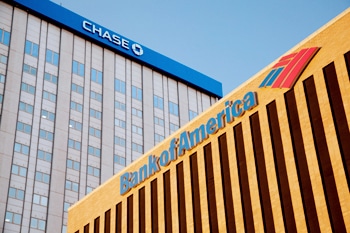
Here’s a statistic for you: Since the beginning of the recession, consumers have added over $1,300 billion to bank accounts. That’s money that is outside of the stock market, sitting on the sidelines. And in this environment, it’s not earning much interest. As frustrating as that is, it’s not likely to change any time soon. So the question is: Where can you park your cash to earn you as much as possible even in these dog days for savers. Here are your choices:
Savings Accounts and Money Market Accounts
The rates are dreary. But these accounts do give you easy access to your money, and they certainly pay more than your checking account (which likely pays zip). If you’re looking to take absolutely no risk, this is the way to go. The minimum investment is very often low ($50 or sometimes less) and your money is FDIC insured, provided you don’t stick more than $250,000 in any one institution.
High-yield Checking Accounts
These are checking accounts that pay interest if you meet certain qualifications (depending on the institution, that may mean a minimum number of debit card purchases, receiving your statements online, using online banking, having direct deposits, or paying bills automatically from your account). In general, if you meet those qualifications, you could earn up to 3% in interest on balances of $25,000 or less. Any amount that exceeds that cap will bring in 1%. The rub is that most of the qualifications, as you may have noticed, involve spending this money, which is intended for savings. But if you can spend and replenish on a regular basis, that extra work may be worth it. Find these accounts using the search engine at checkingfinder.com.
Certificates of Deposit
If you know when you’re going to need this money – in other words, it isn’t an emergency fund, but for a cruise to celebrate your 10-year anniversary in 2015 – a CD can be a nice option. A crash course: You deposit money into a CD for a set amount of time (generally six months, a year, three or five years) and in exchange, the bank pays you interest for the life of the CD. If you pull out your money early, you’ll pay a penalty. This penalty varies by bank, but you might forfeit three months worth of interest for a six-month or one-year CD, and six months worth for a longer-term CD. The trouble with CDs these days is that unless you’re willing to lock up your money for five years, you won’t get a whole lot more than you would with an online money market account. And if interest rates go up, and your CD hasn’t matured, you’re locked into the lower rate. If you decide to go this way, you might consider laddering CDs; in other words, putting your money into a few different CDs with varied dates of maturity. You can capture any increases in interest rate as the CDs mature, by reinvesting them at the new rate. It’s a way for you to have peace of mind, as CDs are FDIC insured, and a little more flexibility.
Treasuries
When you buy Treasuries, you’re buying the debt of the US government, which is considered the safest among safe investments. (The recent credit downgrade not withstanding, the US never defaults on its debt.) Again, they’re not paying much in interest and you want to be able to hold them to maturity. But they’re a fine parking place for your cash. The minimum investment is $100 and you can buy directly from the government at treasurydirect.gov.






